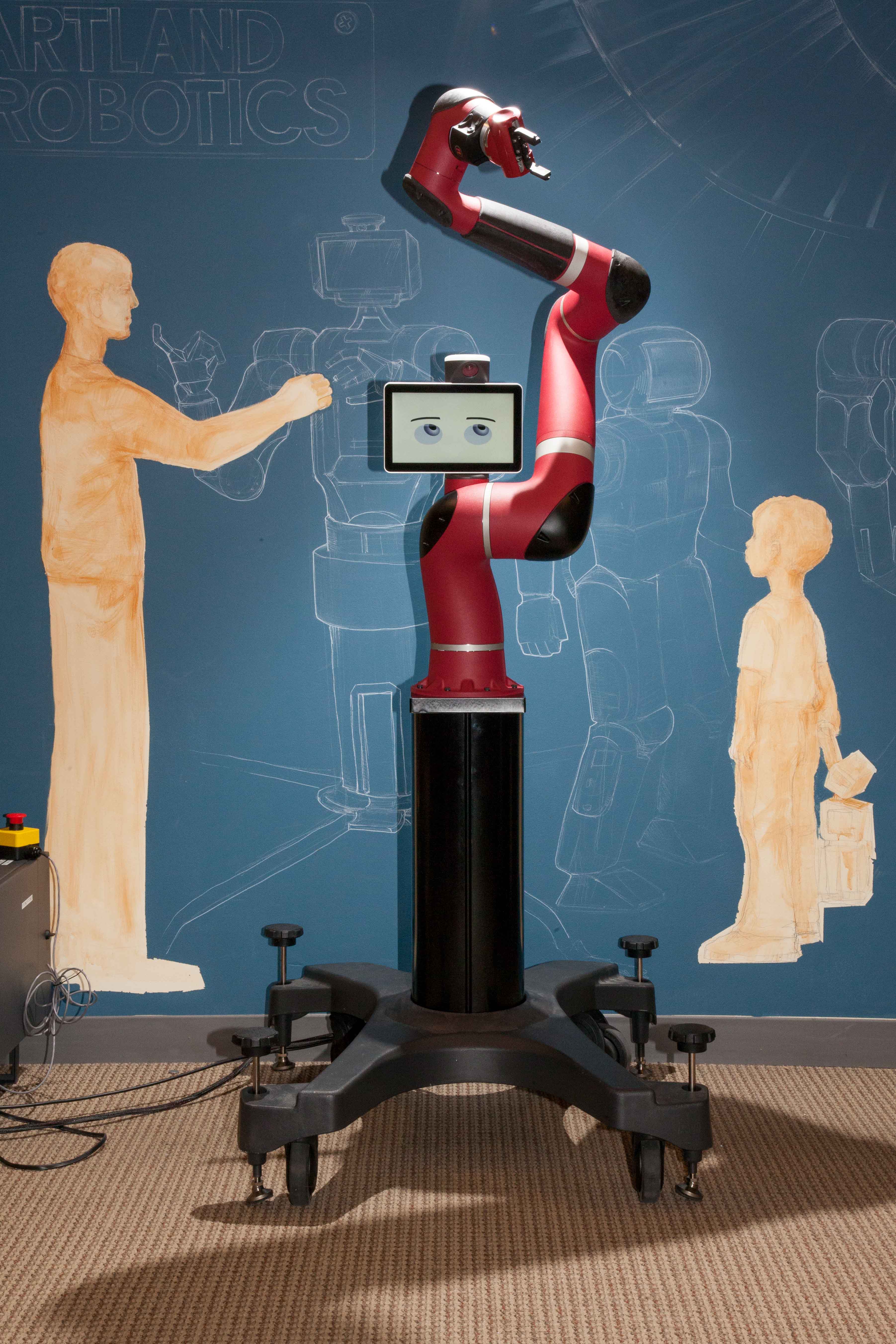Rethink’s Sawyer Robot Just Got a Whole Lot Smarter

Rethink Robotics, pioneers in the field of collaborative industrial robotics, has made a massive upgrade to its Sawyer robots. Designed to help non-experts program routines that instruct the robot how to carry out complex tasks, the new Intera 5 software could help the company realize the potential of factory robots that are capable, safe, and easy to work with.
At the heart of the new system is what Rethink’s founder and CTO Rodney Brooks calls the “behavior engine.” This is essentially a programmable decision tree that can be tweaked to make the single-armed Sawyer robot carry out a wide array of tasks.
As IEEE Spectrum reports, previous versions of Intera kept large chunks of a robot’s decision tree hidden from users. Intera 5, on the other hand, uses a graphical interface to show users exactly why Sawyer is behaving the way it is, step by step. It also allows them to make any changes they like—either by directly programming new steps, or by using the robot’s impressive teach-by-demonstration feature to guide its arm and tools in the right sequence.
Rethink’s first robot, a two-armed model called Baxter, didn’t sell very well—but it was a proof of principle that robots could use things like force sensors to avoid hurting humans while still performing useful industrial tasks. It’s also been a hit in the research community, leading to all kinds of neat ways to teach robots new tasks.
With Sawyer, Brooks built a smaller, faster, and more precise robot that he says is proving much more popular. Whether Intera 5 proves to be the killer app for turning Sawyer into an indispensable, user-friendly factory worker, however, remains to be seen.
(Read more: IEEE Spectrum, “How Robots Can Quickly Teach Each Other to Grasp New Objects,” “Rethinking the Manufacturing Robot”)
Keep Reading
Most Popular
Large language models can do jaw-dropping things. But nobody knows exactly why.
And that's a problem. Figuring it out is one of the biggest scientific puzzles of our time and a crucial step towards controlling more powerful future models.
The problem with plug-in hybrids? Their drivers.
Plug-in hybrids are often sold as a transition to EVs, but new data from Europe shows we’re still underestimating the emissions they produce.
Google DeepMind’s new generative model makes Super Mario–like games from scratch
Genie learns how to control games by watching hours and hours of video. It could help train next-gen robots too.
How scientists traced a mysterious covid case back to six toilets
When wastewater surveillance turns into a hunt for a single infected individual, the ethics get tricky.
Stay connected
Get the latest updates from
MIT Technology Review
Discover special offers, top stories, upcoming events, and more.